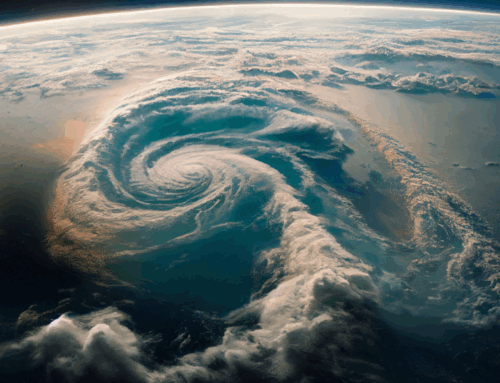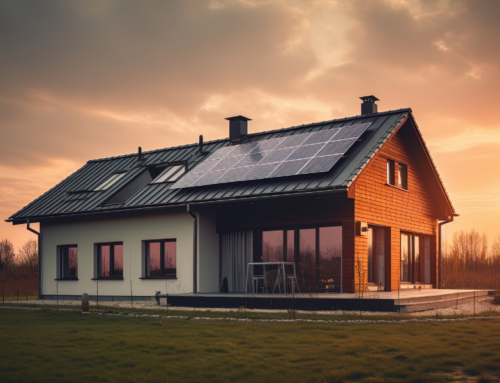Almost every region in the U.S. is prone to extreme weather events. From Nor’easter storms to California wildfires, business owners interested in going solar have probably wondered about the effects of extreme weather on solar installations. Can this renewable energy source stand up to the pressure?
In an effort to set the record straight and dispel a handful of the persistent misconceptions about the durability and efficiency of photovoltaic (PV) technology in extreme weather conditions, we’ll dive into breaking down 5 common misconceptions.
Misconception #1: Solar panel installations don’t perform well in cold-weather climates
This is, bar none, the biggest fallacy known to PV technology. The truth is solar panels extract energy from light, not heat. So, cold weather has little to do with how well your solar installation functions.
If anything, chilly temps might cause an installation to perform better. As solar panels get hotter and hotter—like on a scorching July afternoon in Yuma, Arizona—they actually begin to produce less power from the same amount of sunlight. But that’s a very extreme example.
In the Mid-Atlantic region and other areas of the U.S. prone to freezing temps, as long as the sun is shining on your panels, you’ll be generating energy.
Misconception #2: There’s no point in having a solar installation in areas prone to heavy snow
Incorrect. Solar panels and snow can (and should) co-exist. The amount of energy you extract from your solar installation in snowy locales is almost entirely based on the quality of your panels and how they’re installed.
The best panels are designed to handle extreme variations in temperature (also known as thermal cycling) in both hot and cold climates. And, when they’re properly installed, they’ll melt snow faster than a rooftop without panels.
Plus, if you’re in an extremely snowy area, you can opt for the carport solar installation design to help keep your employees, visitors or students safe from the elements.
Misconception #3: Solar panels and wind don’t mix
Not true. A high-quality solar installation should not be any more affected by strong winds—Nor’easter or otherwise—than any other part of your building or facility.
The best solar installations are informed by local wind patterns and are comprised of components that have also been tested against extreme wind loads.
Think holistically: investing in top-of-the-line panels with a provider who assembles your system with low-quality cables, tie-downs, or racking is short-sighted. You don’t want a cheap cable whipping in the wind to compromise your energy output.
Misconception #4: Solar panels are fragile and can easily crack when subjected to hail
If you live in the Northeast or anywhere with extreme weather conditions, you might think, “Solar panels and hail—that can’t be a good combination.” You might even picture your panels cracking the first time they’re pelted with those high-speed ice balls. But the simplest way to dispel that rumor is to say, “There’s a test for that.”
Every solar panel manufactured is required to undergo testing for extreme weather conditions. To prove that they’ve done so, a manufacturer must obtain an Underwriter’s Laboratories (UL) certification or a variation thereof outside of the United States.
The UL certification proves that a solar panel has satisfied a number of safety, durability, and quality assessments. However, it should be noted that this certification only ensures a minimum amount of testing.
Misconception #5: All UL-certified commercial solar panels fare the same in extreme weather conditions
Nope. Unfortunately, UL certifications only designate that a solar panel manufacturer has met the minimum requirements when it comes to testing. It’s up to you to do a little extra probing. Inquire as to what your provider does in the way of testing beyond UL certifications. They might be ready for you to ask, “Do solar panels work during bad weather?” or “How does weather affect solar panel efficiency?” But, qualified commercial solar companies should be prepared to answer the following, as well:
- “Does the panel manufacturer have an onsite testing facility?”
- “What kinds of tests are regularly performed?”
- “How will these solar panels fare in a hurricane?”
Be blunt and weigh your options. The goal is to determine whether the manufacturer is beating the heck out of their panels in an effort to solve every eventuality. You should ensure that your solar installer considers how all parts of the installation will fare in inclement conditions.
So many misconceptions so little time. In the end, the moral of the story is twofold: 1) If the sun is shining, you’ll be producing clean energy, and 2) high-quality commercial solar installations are designed to withstand Mother Nature’s occasional temper tantrums. It’s as simple as that.
This post originally appeared on the SunPower Resource Blog.








